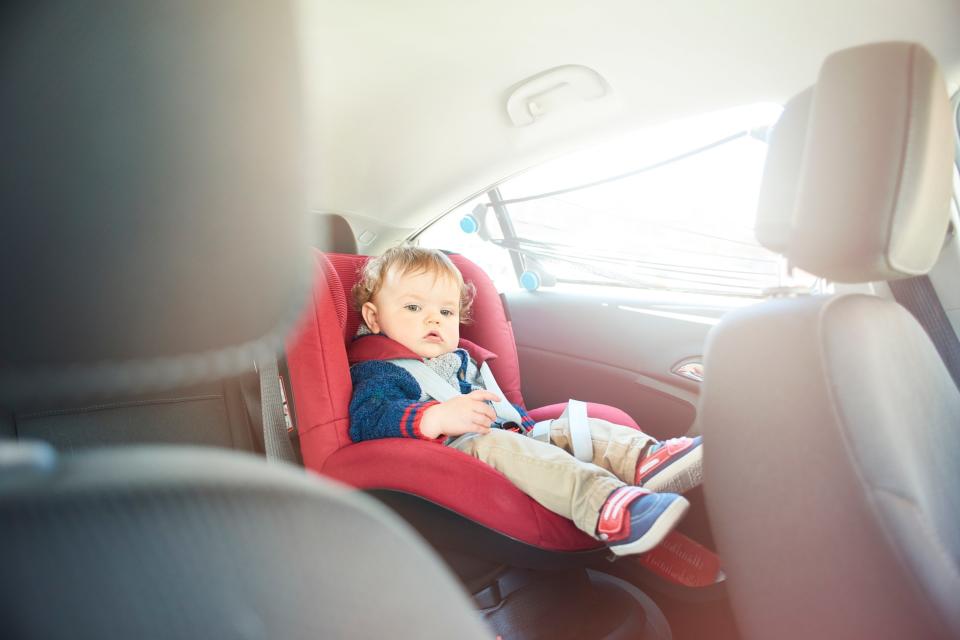A toddler was trapped in a Tesla after its battery died without warning amid record heat waves—’safety comes last’ at Tesla, expert says

A 20-month year old girl in Arizona was recently locked inside a Tesla Model Y after the car's battery died, creating a “life threatening situation” in which firefighters had to break open the door with an ax to rescue her.
Renee Sanchez, the girl’s grandmother, loaded the girl into her car seat for a trip to the Phoenix Zoo. After she closed the rear door, though, Sanchez went around to the front of her car only to find the door wouldn’t open: The car was dead.
“I could not get in. My phone key wouldn’t open it. My card key wouldn’t open it,” she told local news network AZFamily.
Michael Brooks, the executive director for nonprofit Center for Auto Safety, told Fortune that a toddler trapped in a car, in the Arizona heat, can become critically endangered in 15 minutes. After 30 minutes, many children die in hot cars.
Sanchez, faced with what Brooks called a “life threatening” situation, had no choice but to call 911. Scottsdale firefighters raced over, then grew frustrated once they saw the make of the car.
“The first thing they said was, ‘Uggh, it’s a Tesla. We can’t get in these cars,’” Sanchez said. “And I said, ‘I don’t care if you have to cut my car in half. Just get her out.’”
The firefighters broke through the window with an ax, climbed through the window, and pulled the toddler out of the car.
While the girl was “okay” for the first few minutes, Sanchez said, she became very scared and started crying during the commotion. Her rescuers gave her a little fire hat to calm her down once she was out of the car.
After she saw her granddaughter was fine, “then the anger” came, Sanchez said. “All the thoughts of, oh my God, this could have been so much worse.”
Her 12-voltage battery—responsible for powering the car’s electric systems—had died without warning. Teslas are supposed to have persistent warning signs when its 12-voltage battery is low, EV expert Mike Klimkosky said.
That the battery would simply turn off “seems very odd,” he added.
A representative from the Tesla service department confirmed to Sanchez that she indeed received no warnings. Tesla did not respond to Fortune’s request for comment by press time.
“Safety comes last”
There is a mechanism–outlined in Tesla’s online safety manual–for drivers to unlock their cars when they are stuck outside, which was unbeknownst to Sanchez or the firefighters who came to rescue her granddaughter. It involves opening a three-inch circle near the front of the car called a toe cover, pulling out the cables within it, and connecting those cables to an external power supply (like a portable jump starter). That would allow the hood of the trunk to open, giving drivers access to the 12-voltage battery, which they could then jumpstart.
For Klimkosky, who heads a nonprofit dedicated to teaching first responders EV safety, the responsibility lies with the firefighters for not knowing how to jump-start the Tesla. He claims the process would have been faster and easier than breaking through the car.
“It’s the responsibility of the fire department to educate themselves,” Klimkosky said. Tesla, and most other car manufacturers, have an emergency response guide on their websites available to first responders. The onus isn’t on those manufacturers to continue educating firefighters, Klimkosky said.
Yet, he acknowledges that local fire departments don't have enough specialized training to deal with these incidents. That’s why he started his nonprofit: to provide a resource for fire departments to get outside help, and “transition to the new world.”
Brooks, the executive director for Center for Auto Safety, thought it was “absurd” to blame the firefighters for not knowing how to open the car.
“It's not the firefighters’ fault that Tesla chose electronic door latches that don't have proper emergency safeguards,” he said.
Tesla has manual release doors for when you are inside the car and unable to get out, but they are unmarked, unlike seatbelts and airbags. Brooks said this was Tesla’s choice to put “form over function,” that was ultimately “unsafe.”
“When there's not a federal standard that specifies how these vehicles are to be made, Tesla very rarely chooses routes that are safe,” Brooks noted. “They're usually choosing something glitzy: safety comes last.”
Brooks added this incident contributed to an overall “failure in Tesla’s safety culture.” Earlier this year, Tesla had to recall almost 2.2 million cars in almost every model sold since 2012. Last year, Angela Chao, a shipping industry CEO and sister-in-law to Senate Minority Leader Mitch McConnell, died after she drove her Tesla into a lake and became trapped.
Yet, Klimkosky found it unfair to blame Tesla for a problem that all vehicles with electric-door release systems face. He said Tesla goes out of its way to make the toe cover clear and obvious for first responders.
But there are thousands of first responders, and at least 150 different types of vehicles; firefighters cannot be expected to memorize the safety procedure of each vehicle, Brooks said. Tesla should not hide their safety features for the sake of appearance.
Sanchez, for her part, sided with Brooks’ camp, saying Tesla needed better emergency systems and more education for first responders. She was a prior fan of Tesla, but this episode has turned her off from the company.
“I give Tesla props. When it works, it’s great. But when it doesn’t, it can be deadly,” Sanchez said.
This story was originally featured on Fortune.com

 Yahoo Finance
Yahoo Finance 